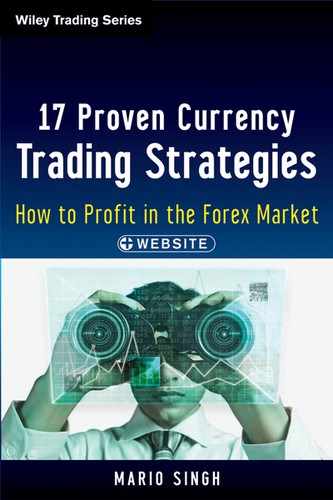Chapter 11
Conclusion
You now have in your hands the tools to help you carve out a very profitable trading career in the forex market. The path is simple: Determine your dominant trading style, and employ strategies specific to that style.
If you are a scalper, stick to the rapid-fire or piranha strategies outlined in Chapter 6. If you are a day trader, either one of the four strategies discussed in Chapter 7 will give you lasting success. If you are a swing trader, following the trend rider or the power ranger is an absolute must.
Trading is simple but it’s not easy. It’s simple because there are only a few rules to follow—five to be exact. Here they are:
These five rules apply across the board, regardless of which category you are in: scalper, day trader, swing trader, position trader, or mechanical trader.
Follow these five rules conscientiously and you will be on your way to becoming consistently profitable. That’s the simple part. However, trading isn’t easy. It’s not easy because the only person who can stop you from achieving success in the forex market is you.
I would like to share one final lesson from my Chinese mentor to illustrate my point better. He taught me that getting from where we are now to where we want to go is a function of only three steps—yes, “just” three steps.
The first step is knowledge. Knowledge is defined as an awareness or understanding gained through education or experience. In forex, this step involves reading a forex quote, knowing how to execute a long or short trade, gaining clarity on the factors that move the markets, and developing insight into your very own trading profile. This knowledge is thoroughly discussed in Part One of this book, specifically in Chapters 1 through 5.
The second step is action. Action is defined as the art of applying knowledge through organized activities to achieve a desired result. In forex, this step involves watching the markets, studying the rules, executing the trade, and recording the results. This action is clearly detailed in Part Two of this book, in Chapters 6 through 10.
The third step starts with the letter “d.” When I ask the audience in my seminars to guess what word this is, many people say decision, discipline, or determination. Although these are good traits, the answer is not in any of them.
The answer is desire.
What is the definition of desire? This is my mentor’s definition:
In English, this means: “If I can’t, then I must. If I must, then I can.”
Any good forex mentor will be able to give you the functional ingredients of knowledge and action. Unfortunately, no mentor can give you desire. That has to come from deep inside you.
In the beginning of my story, I shared with you that I’m not a smart guy. I don’t have a finance or economics degree. But what I had was the desire to succeed.
Do you have the absolute desire to be a mega trading success? If your answer is a resounding yes, congratulations, my friend. Because the other two ingredients of knowledge and action are found between the covers of this book.
It is my sincere wish that you enjoyed reading this book as much as I have enjoyed writing it. If you allow me, I will be your mentor to guide your every step on this fascinating journey. Whether you’re a beginner or an advanced trader, my message remains the same: You can’t afford to ignore the forex market anymore.
If you’re a beginner, you might wonder how much time you need per day to master this skill. The answer is just one to two hours. The forex market is open 24 hours a day. You can start right now, without making any change to your present lifestyle. When you start, I’ll guarantee you one thing: Within a few short years of seemingly not changing anything, you will end up changing everything.
My friend, the forex market is not just the largest financial market in the world. It is the biggest mirror to your soul. How you trade tells you who you really are.
So let’s get started.
Let’s play flat out.
Let’s make magic.
Sincerely,
Mario Singh
